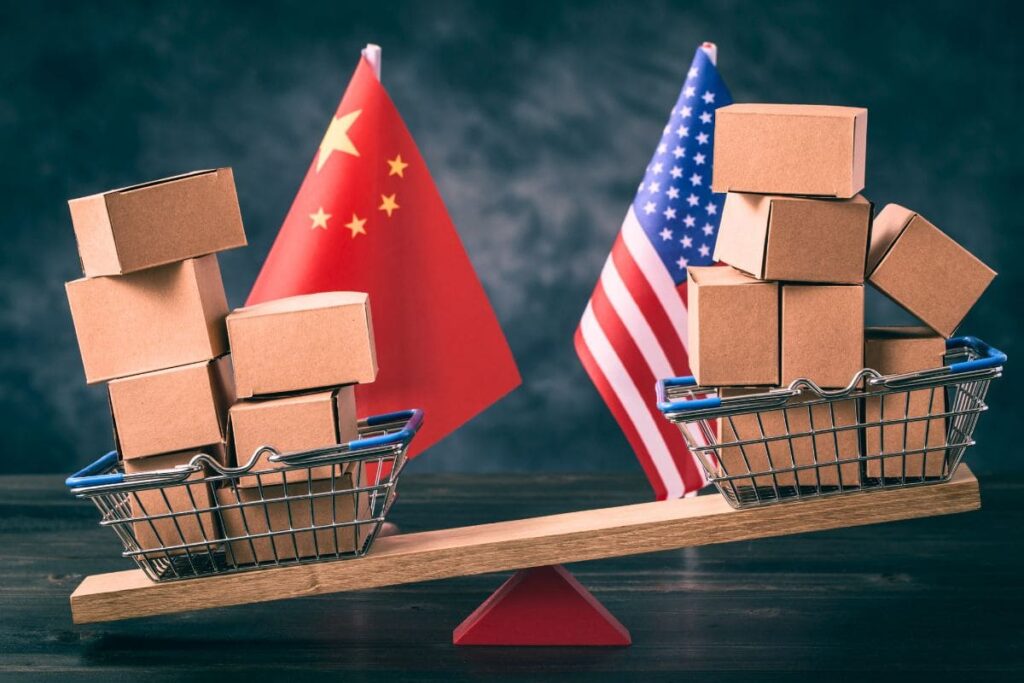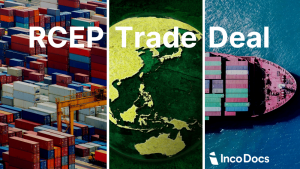Comparative advantage is a concept in economics. It explains how some countries can produce goods and services at a lower cost than others. This cost is measured by what is given up to make the product. Even if one country is better at making everything, it can still benefit by focusing on what it does best. This allows countries to trade and gain from each other’s strengths. This approach increases overall economic growth and efficiency.
The Origin of Comparative Advantage
The concept of comparative advantage was introduced by David Ricardo. He was an English economist who changed the way people thought about trade. Ricardo introduced this idea in the early 1800s. He argued that countries should focus on producing goods where they had the lowest opportunity cost. This was different from older ideas that focused only on absolute advantage.
His theory showed that even if a country was not the best at producing anything, it could still benefit from trade. This was a revolutionary thought at the time. It changed how nations viewed global trade and specialization. Ricardo’s theory remains a foundation for modern trade policies today.
How Comparative Advantage Works: A Practical Example
To provide a clearer understanding, this concept will be explained in two ways: first through an analogy, and then with a global trade example.
Example 1
Let’s say there are two friends. One is great at cooking, and the other is good at cleaning. Even if the first friend is better at both tasks, they still divide their work. Why? Because it saves time and effort. The cooking expert focuses on preparing meals, while the other takes care of cleaning. They each focus on what they are best at, allowing them to complete both tasks faster.
Example 2
Let’s take Japan and the United States as example. Japan is known for making cars at a lower cost, while the United States specializes in creating high-tech products. Even if the United States could produce cars, it would give up more resources and time compared to making high-tech items. By focusing on their strengths, both nations can trade. Japan can sell its cars, and the United States can sell its technology. This way, both countries gain more than if they tried to produce everything on their own.
Opportunity cost is key here. It shows what is given up when choosing to produce one good over another. By minimizing opportunity cost, both countries make the most out of their resources. This is the essence of comparative advantage.
Key Concepts to Understand Comparative Advantage
Opportunity Cost:
Opportunity cost is what you give up when choosing one option over another. It is the value of the next best alternative you don’t choose. For example, imagine you have to decide between studying or working a part-time job. If you choose to work, your opportunity cost is the time you could have spent learning. This concept is important because it helps explain why people or countries pick certain activities over others.
Specialization:
Specialization happens when a country or a business focuses on what it can produce more efficiently. For example, many companies outsource customer service tasks to countries where labor costs are lower. This way, they can focus on their main products while saving money. By doing what they are best at, they maximize output and reduce costs. This idea of specialization is a major part of comparative advantage.
Efficiency and Resource Allocation:
Comparative advantage helps countries and businesses use their resources more wisely. It allows them to focus on what they do best. Think of a company hiring specialists instead of a generalist. A marketing expert will do better at promoting products than someone who handles many jobs at once.
The same idea applies to countries. By focusing on areas where they are most efficient, countries can get more done with fewer resources. This boosts economic growth and increases overall efficiency. This way, each country uses its strengths to get the best results.
Comparative Advantage in the Modern Economy

Comparative Advantage in the US
The United States has a strong advantage in sectors like technology, finance, and innovation. Companies in Silicon Valley lead in software development, artificial intelligence, and advanced manufacturing. This allows the US to produce high-value tech products at a lower cost compared to other countries.
Because of its focus on innovation, the US often exports these high-tech goods to the rest of the world. This gives the country a strong position in global trade. It also allows the US to import other goods, like electronics and consumer products, which are cheaper to produce elsewhere. This balance helps drive economic growth and strengthens trade relations.
Comparative Advantage in China
China’s main strength is its manufacturing power. It can produce goods at a lower cost because of its large workforce and efficient production systems. This allows China to manufacture products like electronics, clothing, and machinery at prices other countries cannot match.
Because of this advantage, China plays a major role in global supply chains. Many companies rely on Chinese factories to produce parts or assemble products. This makes China a key supplier for many industries worldwide. Its low-cost production helps keep prices down and makes it a central player in global trade.
How Comparative Advantage Shapes Trade Relations
Comparative advantage helps countries trade based on their strengths. Each country focuses on what it can produce at a much lower cost. This leads to a balanced exchange. For example, one country might focus on high-tech products, while another focuses on cheaper manufacturing. By trading, both countries get more value than if they tried to produce everything themselves.
This approach benefits both sides. It allows each country to save resources and gain from the other’s strengths. This way, trade becomes more efficient and balanced.
Here’s a simple table showing how this dynamic works:
| Country | Main Strength | Trade Benefit |
|---|---|---|
| United States | Technology and Innovation | Exports software, AI, and advanced machinery |
| China | Low-Cost Manufacturing | Exports consumer goods and electronics at lower prices |
| Brazil | Agriculture | Exports coffee, soybeans, and meat |
| Germany | Engineering and Machinery | Exports high-quality cars and industrial equipment |
These complementary strengths allow each country to focus on what it does best. This not only increases efficiency but also builds stronger trade relations based on mutual benefit.
What is Absolute Advantage?
Absolute advantage means being able to produce more goods and services using the same amount of resources. For example, if one country can make 100 cars using the same materials that another country uses to make 50, the first country has an absolute advantage. It is simply about being more productive or efficient in making a product.
Example of Absolute Advantage vs Comparative Advantage
Let’s look at an example with Country A and Country B. Country A can produce both cars and computers faster than Country B. This means Country A has an absolute advantage in both products. But the real question is which product should each country focus on making?
This is where comparative advantage comes in. If Country A gives up fewer resources by making computers than it would by making cars, it should focus on computers. Country B, even if slower, should focus on cars. By specializing, both countries can then trade and end up with more of both products.
So, while absolute advantage looks at total productivity, comparative advantage focuses on efficiency and opportunity cost. This is why even a less efficient country can benefit from trade by specializing in what it does best.
What is Competitive Advantage?
Competitive advantage is what makes a company stronger than its competitors. It helps a business offer something better, cheaper, or more unique. This advantage can come from different factors. Some companies may produce items at a lower cost. Others might offer a product that stands out due to its quality or special features. Competitive advantage is what convinces customers to choose one brand over another.
Example: Competitive vs. Comparative Advantage
Imagine there are two coffee shops on the same street. The first one sells coffee at a very low price. This is its competitive advantage. It attracts customers looking for the best deal. The second shop has a different approach. It offers high-quality coffee beans and a relaxing space to sit. Its advantage is about quality and a unique experience.
Now, let’s look at comparative advantage. If each shop focuses on its strength—one on price and the other on quality—they will attract different customers. They will each use their resources more effectively. Comparative advantage is about specializing based on lower opportunity cost. Competitive advantage, on the other hand, is about using unique strategies to stand out.
Challenges and Criticisms of Comparative Advantage
Comparative advantage can lead to over-specialization. When a country focuses too much on one industry, it can become vulnerable. For example, if a country relies mostly on oil exports, a drop in oil prices could hurt its economy. This happens because it has few other options to replace the lost income. Over-specialization can also cause a lack of jobs in other industries. This can create an economic imbalance and limit growth in other areas.
Another risk is resource depletion. Countries that focus on mining or agriculture may harm their environment. This could reduce their ability to produce in the future. If land or resources are overused, it can hurt other industries and lead to long-term damage. Countries must be careful not to exhaust their resources too quickly.
Potential solutions
One way to reduce risk is to diversify industries. Countries should focus on more than one sector to avoid relying too much on a single product. For example, oil-dependent nations can invest in renewable energy or manufacturing. This spreads their risk. If one market changes, they have other options to balance their economy.
Another way is to build strong trade partnerships. Countries can create agreements with several partners. This helps them get a steady supply of goods and reduces dependence on just one buyer. For instance, if a country loses its biggest buyer, it can turn to others for support.
Comparative Advantage and Free Trade
Comparative advantage shows why countries trade. It allows each country to focus on what it does best. This means that countries can produce goods at a lower cost and trade for what they need. Free trade agreements are built around this idea. They lower barriers like tariffs and allow countries to trade easily.
For example, if Japan makes electronics more efficiently and the US makes machinery, both can trade and gain. This way, both nations use their resources better. Trade based on comparative advantage creates more goods and lowers prices. It also helps build strong economic ties.
To take advantage of free trade agreements most countries require a certificate of origin. Read, how to get a certificate of origin here.
How Protectionism Disrupts Comparative Advantage
Protectionism is when a country tries to limit imports. It adds tariffs or restrictions to protect local industries. But this goes against the theory of comparative advantage. The theory states that countries should focus on what they produce best. When tariffs are added, costs go up for everyone. For example, if a country places a tariff on imported steel, local businesses pay more to get steel. This raises prices for products like cars that use steel.
Protectionism reduces the benefits of trade. It blocks the gains from focusing on strengths. The theory of comparative advantage shows that open trade is better for everyone.







